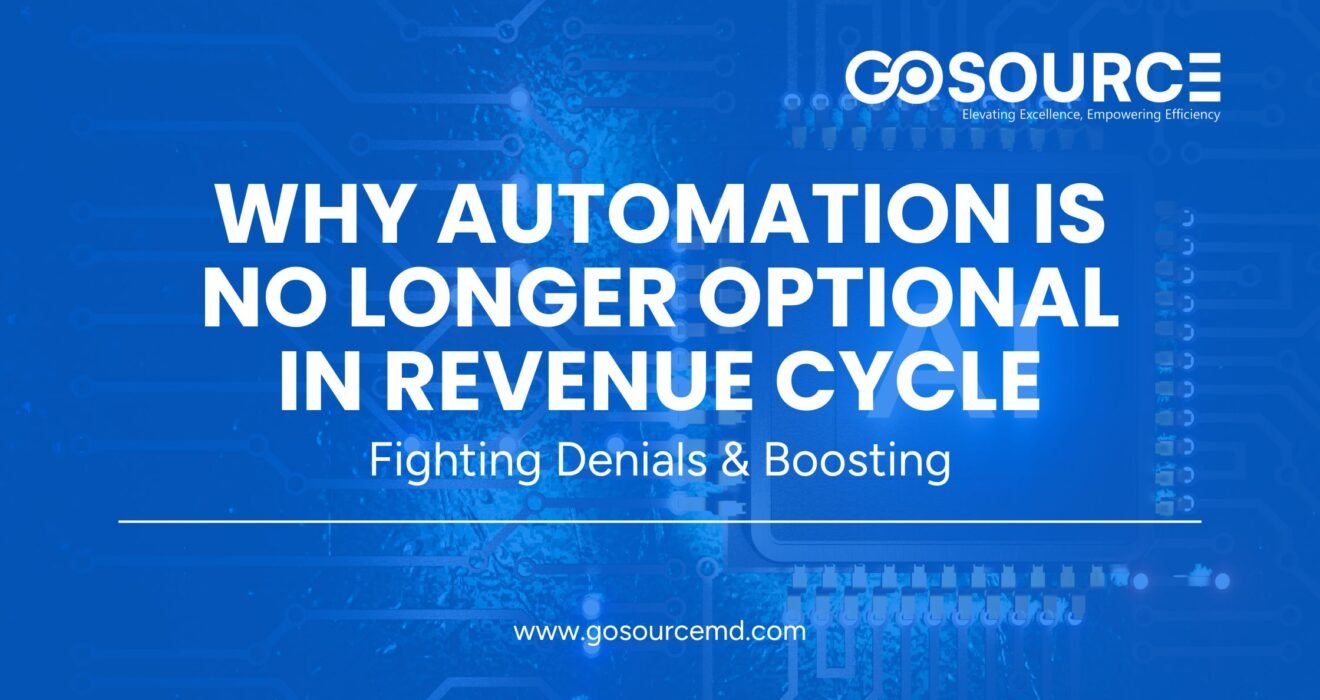Why Automation is No Longer Optional in Revenue Cycle?
Over the last decade, healthcare providers have faced an uphill battle with tighter margins, complex payer rules, and ongoing staffing shortages that have reshaped how revenue cycle teams operate.
But the biggest challenge of all isn’t change itself. It’s the speed at which it’s happening.
When denials rise faster than your team can manage, or when cash flow depends on manual processes that take days instead of seconds, efficiency becomes a matter of survival.
That’s why automation in the revenue cycle is no longer optional. It’s essential.
In 2025 and beyond, healthcare organizations that adopt AI-powered revenue cycle automation will outperform competitors that still rely on manual workflows. Automated RCM systems help streamline claim submission, reduce denial rates, and enhance overall productivity. By integrating automation into every step, from patient eligibility to collections, providers can improve both operational efficiency and patient satisfaction while ensuring a stronger, more predictable financial performance.
Table of Contents
Toggle1. The Denial Epidemic: Manual Processes Can’t Keep Up
Every claim denial tells a story, and too often, it’s one of missed opportunities.
The truth is, 60 to 80 percent of denials are preventable. Yet many healthcare organizations still rely on manual data entry, repetitive verification steps, and reactive denial management.
When processes depend entirely on human intervention, errors multiply, turnaround time stretches, and recovery costs climb.
Automation changes that equation by detecting issues early, preventing rework, and identifying denial trends before they affect your bottom line.
2. Automation as a Denial-Defense Strategy
Imagine a system that reviews every claim for eligibility, authorization, and data accuracy before submission automatically.
Or a denial management tool that learns from payer behavior, flags recurring rejection codes, and even suggests fixes before resubmission.
That’s not a distant dream. It’s the new operational baseline.
Automation enables:
- Real-time claim validation before submission
- Automated denial categorization and routing
- Predictive analytics to anticipate denial causes
- Seamless follow-up workflows that reduce AR days
By embedding automation into each RCM touchpoint, healthcare organizations can turn denial management from reactive firefighting into proactive prevention.
3. Boosting Collections Through Intelligent Automation
Cash flow thrives on consistency, and automation brings exactly that.
By eliminating manual lag and standardizing repetitive workflows like charge posting, payment posting, and reconciliation, teams can focus on higher-value work such as patient engagement, payer negotiation, and exception handling.
Automated reminders, intelligent work queues, and real-time dashboards allow billing teams to monitor collection trends and prioritize high-value opportunities.
The result is faster payments, fewer write-offs, and a more predictable revenue pipeline.
4. People + Technology = The Real Advantage
Automation doesn’t replace people. It amplifies them.
At GoSource, we’ve seen firsthand how AI-driven tools empower teams to make smarter decisions faster. When combined with skilled RCM professionals, automation becomes an enabler of insight, accuracy, and agility.
It’s not about replacing billers. It’s about giving them superpowers.
5. The Future Belongs to the Proactive
The healthcare landscape is moving faster than ever, and automation is the key to keeping pace.
Organizations that invest in smart RCM technology today will not only reduce denials and accelerate collections but also gain the scalability needed for tomorrow’s growth.
At GoSource, we help providers and billing companies integrate automation into their existing workflows, creating a future-ready revenue cycle that’s resilient, compliant, and efficient.
Automation isn’t just a competitive advantage anymore. It’s the foundation of sustainable revenue.
The question is no longer “Should we automate?”
It’s “How quickly can we start?”

About Author
Derick D. Perkins, MBA/MHA, CSPPM
Derick Perkins, Chief Strategy Officer at GoSource, brings 25+ years of experience in medical billing and revenue cycle management. He partners with healthcare providers to reduce denials, improve reimbursements, and navigate industry shifts with confidence.



